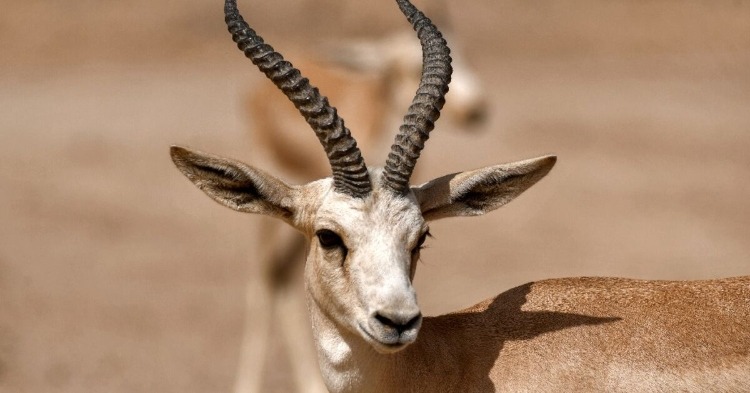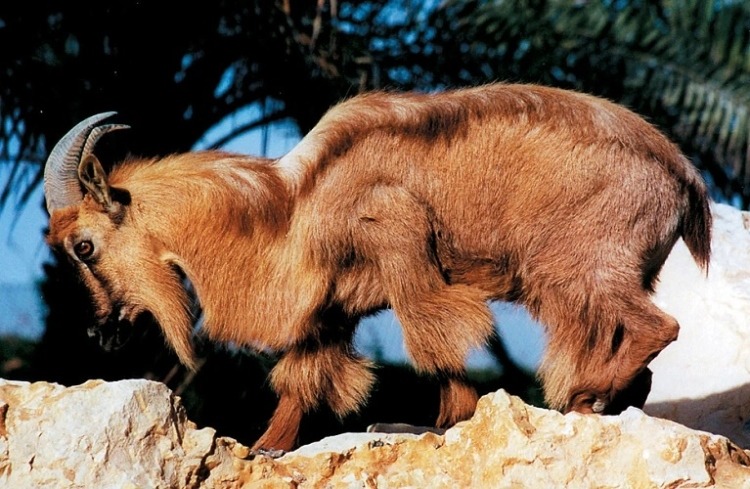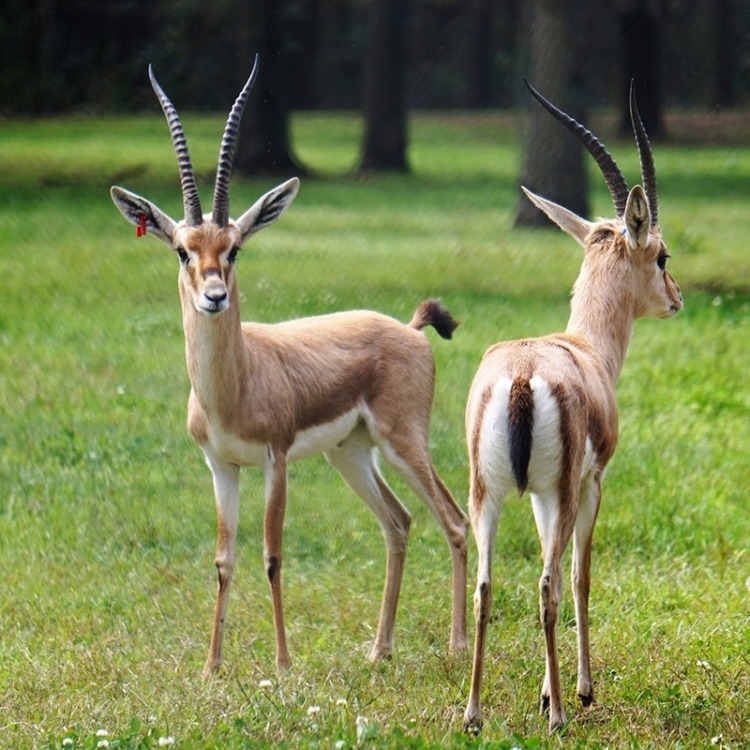Across the Arabian peninsula is an expansive world of rich wildlife and diverse ecosystems but unfortunately, just as there is a rich diversity, a lot of species are in danger of extinction while many other have already suffered that fate many years ago. It’s important to shed a light on such a phenomenon and that is why we have pooled together a collection of animals that are either endangered or have gone extinct to act as word to the wise for the need to protect our wild life.
Striped Hyena
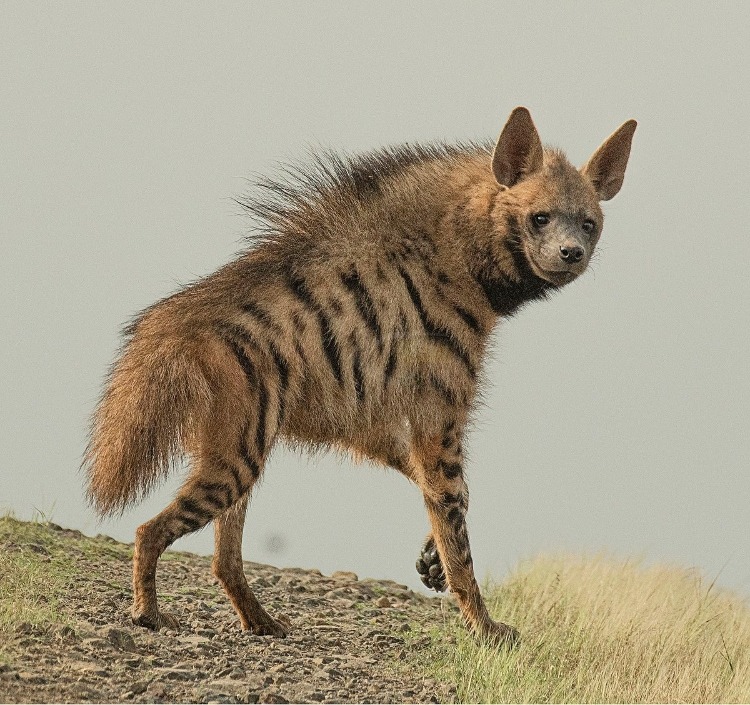
Estimated Remaining Population: 5000 to 14,000
Conservation Status: Near Threatened (In danger of becoming endangered in the future)
It is important to know that striped hyenas are not the ones that starred in the Disney classic, “The Lion King” those were their more popular cousins known as spotted hyenas. Their lack of popularity is not just because of their dwindling number but also because they are quite shy and nocturnal, so it is hard to encounter them in the wild. They are found in multiple locations including North Africa, the Middle East and India.
Known to be scavengers just like the Egyptian vulture feeding on the carcasses of carrions as well as popular mammals like gazelles and zebras, they also, on occasion, would hunt smaller animals like reptiles. Considered great for the environment because they clean up carcasses, they are also known to be healthy thieves as they sometimes would steal fruits like peaches and dates. They are mainly threatened by hunting as well as the loss of their habitat.
Did You Know?
Their front legs are known to be longer than their hind legs so when they walk it looks like they are limping when in reality they are quite fit and can run and move around with ease.
Nubian Ibex
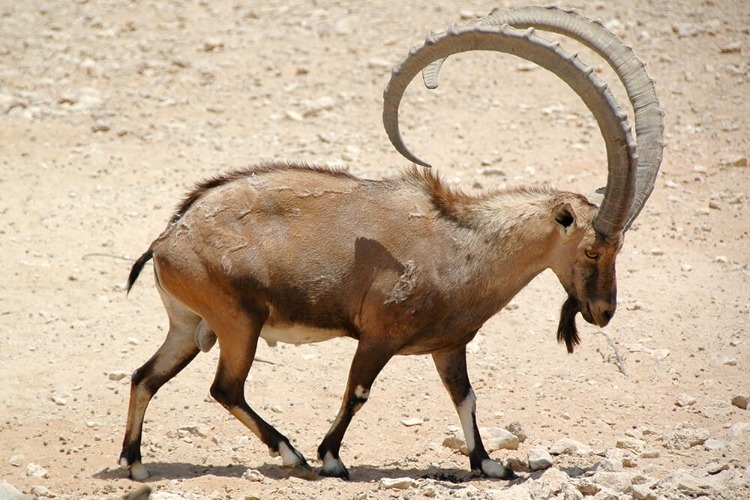
Estimated Remaining Population: Less than 5000
Conservation Status: Vulnerable (threatened with extinction unless the circumstances threatening its survival improve)
These goat-like animals can be found in Northern as well as North-East Africa and the Middle East. They have a preference for dry, mountainous habitats that include hills and canyons. Their horns are the star of the show, reaching a height of 1.2 meters as they wound around into their signature curved shape. These horns are not to be messed with as the Nubian ibex relies on them to slam into possible predators.
Unlike the Arabian tahr, they are more social and like to form into herds. As herbivores, they enjoy eating grass and leaves, similar to their counterparts, they face a lot of threats including competition with other animals like camels as well as habitat loss and degradation.
Did You Know?
They are super agile and can go up and down the mountains as though it’s nothing, though they make it look easy it no easy feat as traversing mountains can be pretty dangerous, the real expert mountain climbers.
Egyptian Vulture
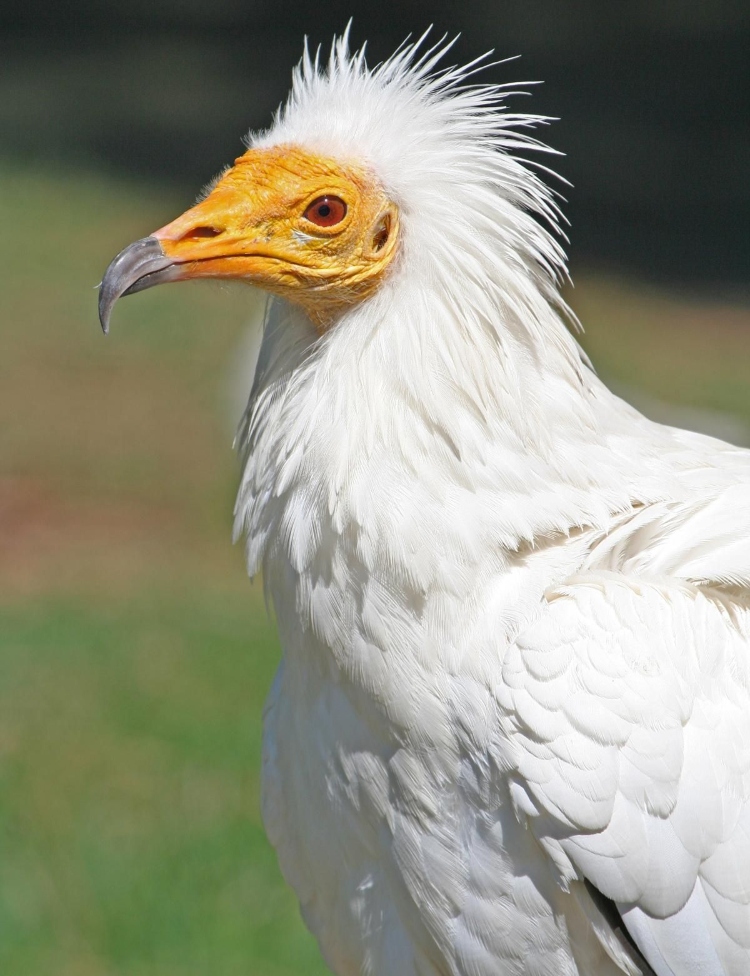
Estimated Remaining Population: 20,000 to 61,000
Conservation Status: Endangered
This messy-haired bright yellow-faced bird with its white plumage outlined with black feathers is in danger of extinction. You would think based on its name that it is found only in Egyptian skies, yet, this bird doesn’t like to be tied down and you can find it across three different continents: Asia, Europe, and Africa. It likes to hang out on mountains, plains, wetlands, savannahs and areas close to where people live.
As a scavenger, its diet includes carrions, tortoises, and even the feces of animals, these birds are actually great for the ecosystem because they get rid of carcasses and so stop the spread of harmful diseases. It is unfortunate to say that the main threat behind this bird’s likely extinction is human activity with illegal poisoning being the highest contributor, other causes include electrocution as well as colliding into wind turbines.
Did You Know?
It is considered one of the only animals that use tools to hunt or scavenge for food. For example, to break an ostrich egg, rather than pecking at it incessantly, it would instead pick up a rock lying around and throw it at the egg to break it open.
Arabian Tahr
Estimated Remaining Population: 2202 to 2324
Conservation Status: Endangered
Considered a wild goat, you can only find them in the Al Hajar Mountains of Oman and the UAE. They live in high altitudes and have to travel down to drink from river-like courses known as wadis. As they are herbivores and browsers, they like to eat leaves, grass, seeds and tree fruits. Again, their threat to extinction is due to human activity which includes poaching, overgrazing as well as the destruction of their habitat because of the construction of roads and buildings.
Did You Know?
Unlike goats and sheep, tahrs like to be monogamous and prefer a quieter, smaller family unit over being part of a big herd. A typical Arabian tahr family would consist of the father, mother, and one to two kids.
Slender Horned Gazelle
Estimated Remaining Population: Less than 1000
Conservation Status: Endangered
Found in Egypt, Tunisia, Algeria and Libya, these gazelles are known for their long pointy horns that measure up to 38 cm and their white sandy coats that blend in with their surrounding desert environment. Its coat is also considered reflective which helps to cool the gazelle as it roams through the hot desert environment.
Just like the Arabian tahr, it likes to eat grass and herbs and gets most of its water from the vegetation and goes through long periods of time without drinking any water. Its main threat is excessive hunting as well as an increase in human activity in the areas in which it resides.
Did You Know?
You know when you accidentally snort and end up turning red as everyone laughs? Well not for the slender-horned gazelle…no one laughs when it snorts, rather its herd would run and hide at a safe place as snorting is considered an alarm warning of upcoming danger.
Arabian Leopard
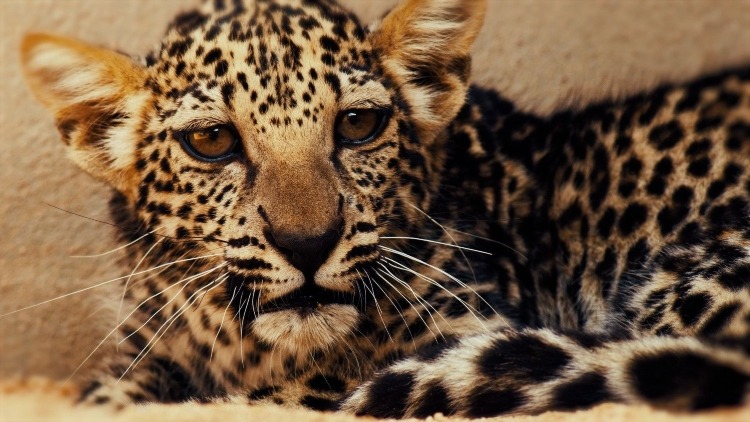
Estimated Remaining Population: Less than 200
Conservation Status: Critically Endangered
Emerging from Africa more than 500,000 years ago is the Arabian leopard, considered one of the most significant mammals of the Arabian peninsula. Its the kind of leopard that managed to cross many territories from the Mediterranean to the Arabian Gulf as well as Mount Sinai, Negev Desert and Haraz. Overtime, its numbers began to dwindle mainly because of illegal hunting as well as the widespread loss of its natural habitat.
Today, less than an estimated 200 leopards remain in existence which spurred institutions like the Royal Commission for AlUla breeding center in Taif, Saudi Arabia to take action and fight in reviving its population. Just last summer, two female Arabian leopards were born at the breeding center, spurring a celebratory mood because of Saudi Arabia’s efforts at animal conservation.
Did you know?
A cool fact about the mammal is that it is considered the smallest member of the leopard family with the largest among them weighing only 30 kg.
Saudi Gazelle
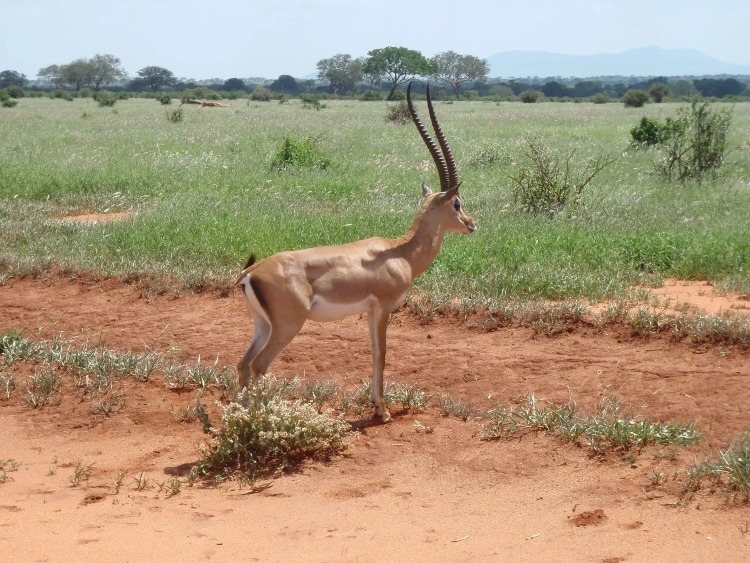
Estimated Remaining Population: 0
Conservation Status: Extinct
Last seen in the wild back in the 1970s, the Arabian Gazelle was an animal that used to live in the gravel and sandy plains of the Northern and Western Arabian peninsula, stretching from Kuwait all the way to Yemen. It usually preferred mountainous and hilly habitats, spending its days up in the hills while in the morning it would come down to forage. Its time was cut short and in 1996, it was officially declared to be extinct following years of being victim to the consequences of excessive hunting as well as habitat loss and invasive use of herbicides.
Did you know?
Known for its slender build, long neck and hind legs, the gazelle was quite the sprinter, able to reach speeds of 80 km per hour. It was also highly in tune with its senses, having excellent vision as well as a great sense of smell.
Sinai Tiger
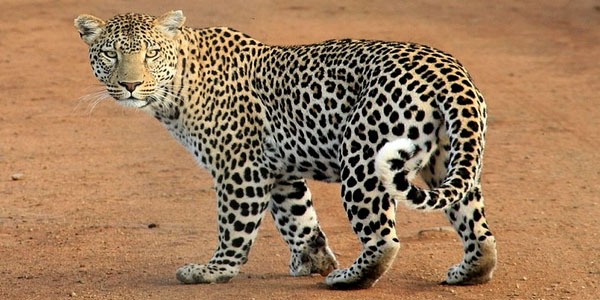
Estimated Remaining Population: 0
Conservation Status: Extinct
The Sinai tiger, known as the spotted mammal that used to frolic along the St. Catherine Reserve was officially declared extinct many years ago. It vanished from existence after getting hunted by humans alongside an imbalance in its environment of reduced rabbits and deer, its common prey. All these factors prompted the tiger to leave and find another place where it can search for food and ever since 2016, it was never spotted again.
Did you know?
Back in 2014, the Sinai tiger that was known to be endangered back then was spotted and killed by nearby residents.
Arabian Ostrich
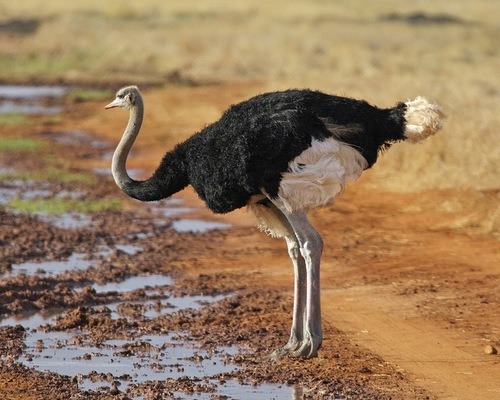
Estimated Remaining Population: 0
Conservation Status: Extinct
Known as either the Arabian ostrich, Syrian ostrich or Middle Eastern ostrich, it used to live in the Arabian peninsula as well as the Near East up until the 20th century. The bird was quite spread out as in historic times, it was known to be found in two discrete populations, one in the southeast of the Arabian peninsula while a larger one was found in an area that today borders Saudi Arabia, Jordan, Iraq and Syria. It was also found in Qatar, Kuwait, the UAE and Yemen so it was pretty spread out along the Arabian peninsula.
As with many of the animals that vanished, the main reason behind its extinction was because of human interference and in the case of the Arabian ostrich, it ceased to exist because of over-hunting and commercial exploitation. Once the ostrich was captured, it underwent total exploitation as the entire animal ended up getting utilized whether its meat and eggs for food or its feathers to make handicrafts.
Did you know?
With every mating season, male ostriches would undergo quite the transformation by changing their coat color to pink as a way to signal to females that they were ready to mate.
So far, what can be gleaned from the life of these animals is that human interference is the most common attribute to their endangerment which is why we need to be aware of our role and the changes that may have to be applied in order to reverse the damage already done. That is why it should be clear that having any of these animals as pets will continue to worsen the problem and contribute to the existing phenomenon.
WE SAID THIS: Don’t Forget… Fostering A Safe Haven For Animals Or An Uncomfortable Destination? Giza Zoo’s Best And Worst Moments


